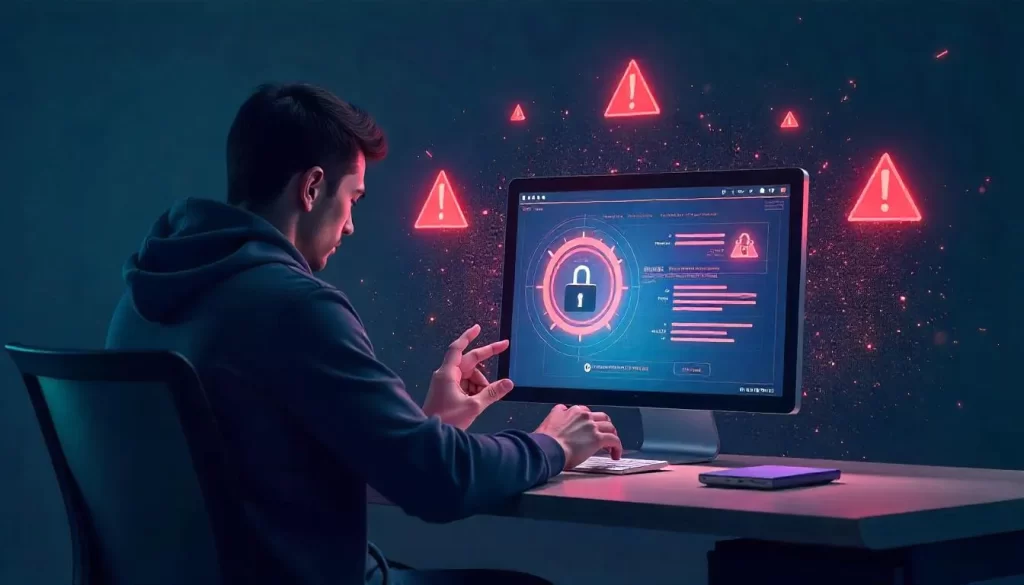In today’s digital landscape, the security of online accounts is crucial. A pwned password refers to a password that has been compromised in a data breach or exposed through password cracking techniques like brute-force attacks. These compromised passwords can result in devastating consequences, such as account takeovers, identity theft, and unauthorized access to personal and financial data. Understanding these risks and taking proactive measures to secure your online accounts is more important than ever.

What Are Pwned Passwords and How Do They Occur?
What Is a Pwned Password?
A pwned password is any password that has been exposed through a security breach or data leak. Often, these breaches occur when cybercriminals exploit vulnerabilities in websites or systems to gain unauthorized access to user information. The term “pwned” comes from the online gaming community, where it originally meant “owned,” referring to the act of defeating someone or something thoroughly.
How Do Passwords Get Pwned?
Cybercriminals can gain access to pwned passwords in a variety of ways. A common method is through data breaches where attackers infiltrate websites and access vast amounts of personal data, including usernames, email addresses, and passwords. Once compromised, these passwords can be sold on the dark web or used for credential stuffing—a method of testing stolen usernames and passwords across multiple sites to gain unauthorized access.
Related Posts
- Impact of Pwned Passwords and Accounts
- What Does “Pwned” Mean?
- Behind “Have I Been Pwned”: Database and Functionality
The Consequences of Pwned Passwords
Account Takeovers
An account takeover happens when a cybercriminal uses stolen login credentials (a pwned password) to access and control your accounts. Once in control, they can change account settings, lock you out, and carry out malicious activities such as sending spam or stealing personal data. This can affect everything from email accounts to banking apps, leading to significant damage.
For example, if your email password is compromised, a hacker can easily reset the passwords on your other online accounts, gaining access to sensitive information like financial details or social media profiles.
Identity Theft
The stolen data from a pwned password can be used for identity theft, where attackers impersonate you in order to open new credit cards, apply for loans, or even commit fraud. With enough personal information, cybercriminals can wreak havoc on your financial life, causing long-term damage to your credit score and reputation.
Unauthorized Access to Sensitive Data
When cybercriminals gain access to a pwned account, they may obtain sensitive information such as financial records, personal documents, or private messages. This can lead to further fraud, blackmail, or the leaking of confidential data to the public or other malicious parties.

How Cybercriminals Exploit Pwned Passwords
Password Cracking and Brute-Force Attacks
Once a password is pwned, cybercriminals often use brute-force attacks to crack weak passwords and gain access to multiple accounts. These attacks involve trying every possible combination of characters until the correct one is found. The weaker the password, the easier it is for cybercriminals to crack it.
Credential Stuffing
Credential stuffing is a common attack method where hackers use pwned passwords across different platforms. Since many users reuse the same password across multiple accounts, cybercriminals can successfully access multiple accounts with just one compromised password. This is why using the same password for multiple sites is risky.
Protecting Yourself from Pwned Passwords
Use Strong, Unique Passwords
One of the best defenses against a pwned password is to create strong, unique passwords for each account. A strong password should be at least 12 characters long and contain a mix of letters, numbers, and symbols. Avoid using easily guessable information, such as your name, birthdate, or common words.
Enable Two-Factor Authentication (2FA)
Whenever possible, enable two-factor authentication (2FA). 2FA adds an extra layer of security by requiring a second form of identification, such as a code sent to your phone, in addition to your password. This makes it significantly harder for cybercriminals to take over your accounts, even if they have your password.
Regularly Check for Breaches
Use tools like “Have I Been Pwned” to regularly check if your email or password has been exposed in any known data breaches. By staying on top of these alerts, you can quickly take action to secure your accounts if your data is compromised.
Set Up Breach Detection and Email Alerts
Many services, including “Have I Been Pwned”, offer breach detection and email alerts. Signing up for these services will notify you immediately if your data is found in any new breaches, allowing you to take action as soon as possible.
What to Do If Your Password or Account is Pwned
Step 1: Change Your Password Immediately
If your pwned password is discovered, the first step is to change it immediately. Ensure that your new password is strong and unique. Avoid using passwords that you’ve used on other sites, and consider using a password manager to store and generate secure passwords.
Step 2: Review Account Activity
Once you change your password, review the activity on your account for any suspicious actions, such as unauthorized logins or purchases. If you notice anything unusual, report it to the service provider immediately and take necessary actions like freezing accounts or reporting fraud.
Step 3: Enable Two-Factor Authentication
After resetting your password, enable two-factor authentication on all accounts that support it. This adds an additional layer of protection, making it more difficult for cybercriminals to access your account even if they have your password.
Related Posts
- What Happens When Your Password Is Pwned?
- Importance of Cyber Hygiene and Monitoring
- How to Protect Yourself from Getting Pwned
Key Takeaways
The consequences of pwned passwords and account takeovers can be severe, leading to identity theft, unauthorized access, and long-term financial damage. To protect yourself, use strong, unique passwords, enable two-factor authentication, and regularly check your accounts for breaches. By staying vigilant and proactive, you can reduce the risks associated with compromised passwords and accounts.
- Pwned passwords can lead to account takeovers, identity theft, and unauthorized access to personal data.
- Password cracking and credential stuffing are common methods used by cybercriminals to exploit compromised passwords.
- To protect yourself, use strong, unique passwords, enable two-factor authentication, and regularly check for breaches using services like “Have I Been Pwned”.
Frequently Asked Questions (FAQs)
What is a pwned password?
A pwned password is a password that has been exposed in a data breach or security incident, making it vulnerable to exploitation by cybercriminals.
How do I check if my password is pwned?
You can use services like “Have I Been Pwned” to check if your password has been compromised in a known breach.
What should I do if my password is pwned?
Immediately reset your password, enable two-factor authentication, and monitor your accounts for suspicious activity.
Can using the same password across multiple sites increase the risk of being pwned?
Yes, reusing passwords across multiple sites increases the risk of credential stuffing attacks, where hackers use stolen passwords to gain access to multiple accounts.
